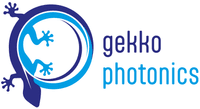

Raman Spectroscopy Solutions for Pharmaceutical Industry - Chemical & Pharmaceuticals - Pharmaceuticals
Raman spectrophotometry enables quick and precise evaluation of a sample`s chemical composition and molecular structure and is a beneficial analytical tool in drug quality control. Detecting active ingredients and contaminants in medicine samples is one of the most essential uses of Raman spectrophotometry in medication quality control. Raman spectroscopy makes it possible to identify the substance in the sample by determining the distinctive spectral lines of a substance. Also, this method can find contaminants that might compromise the drug`s effectiveness or safety.
WHAT IS RAMAN SPECTROSCOPY
The molecular spectroscopy technique known as Raman spectroscopy relies on the inelastic scattering of monochromatic light in molecular structures. The molecules` excitation states are altered by the incident laser light, and as a result, the molecules produce light at different wavelengths in relation to the excitation wavelength (called Stokes or Anti-Stokes shifts). Every substance has a unique Raman spectrum. Because of this, the presence and composition of different chemicals can be detected and quantified using Raman scattering.
Raman spectroscopy is ax non-destructive technique, which means that it does not damage or alter the sample in any way. It is also a non-contact technique, which means that it can be used to analyze samples without coming into physical contact with them. This makes Raman spectroscopy an ideal technique for analyzing delicate or sensitive samples.
The main problems in the pharmaceutical industry are:
- Low efficiency of the production line due to the complexity of quality control processes on and off the production line.
- Variability of raw materials: Raw materials used in the production of medicines can vary in quality and composition, leading to difficulties in maintaining the consistency and quality of the final product.
- Contamination: Contamination in the manufacturing process can seriously affect the quality and effectiveness of the drug. Contamination can occur both during the production process and during storage or transport.
- Human Errors: In the manufacturing process of medicines, human errors can lead to imperfections and quality issues. Many drug manufacturers are trying to minimize the risk of human error by automating and simplifying the production process.
- Maintaining a high level of quality control for a wide variety of different chemical substances in drugs.
- Costly and time-consuming quality testing of all components of the production line, such as ingredients, semi-finished products, and products.
- Most SMEs in the pharma industry cannot afford to have their research laboratories equipped with expensive diagnostic tools, e.g., stationary spectrophotometers, and a team of laboratory technicians to handle the processes. They have to outsource these processes and send them to specialized laboratories - it costs money and takes time.
All the problems of the pharmaceutical industry require systematic and thorough quality control to ensure the safety and effectiveness of the final product.
It is challenging to do this without an automated quality control system using the latest technological developments.
Our solution solves many of these problems by providing a solution that is:
- Efficient, automated, and dedicate
- It allows you to measure in real-time, without waiting for results,
- It enables very frequent measurement of the quality of substances in many places of the production line,
- Excludes human errors, e.g., spectrum interpretation errors, by offering an automated system based on machine learning to determine the quality status of the tested substances and transfer them to operators on the production line,
- It enables a significant reduction in the cost of quality control of drugs on the line.
Raman spectroscopy makes it possible to determine the characteristic spectral lines of a substance, which makes it possible to identify the substance in the sample. In addition, this technique can detect the presence of impurities that may affect the efficacy or safety of the drug.
Another application is determining the quality of active substances, i.e., their purity and stability. This technique allows us to monitor changes in the spectrum of substances, which may indicate the presence of impurities, or changes in the chemical structure, which may affect the drug`s effectiveness.
Case 3: Supervision of the drug formulation process
Raman spectrophotometry can be used in the drug formulation process to optimize drug composition and dosage. This technique makes it possible to determine the structure and physical properties of the molecules, which allows the composition and dosage of the drug to be adjusted to specific needs.
Advantages of our technology
Real-time quality check directly on the manufacturing line
The measurement does not damage the test sample
Our technology is able to detect single molecules of the substance being tested
The solution offers significant savings in the production process compared to the current systems (testing in external laboratories, which increases costs and slows down production)
By taking quality control to a higher level, the quality of products going on sale will increase, which directly translates into increased customer satisfaction and product competitiveness in the market
